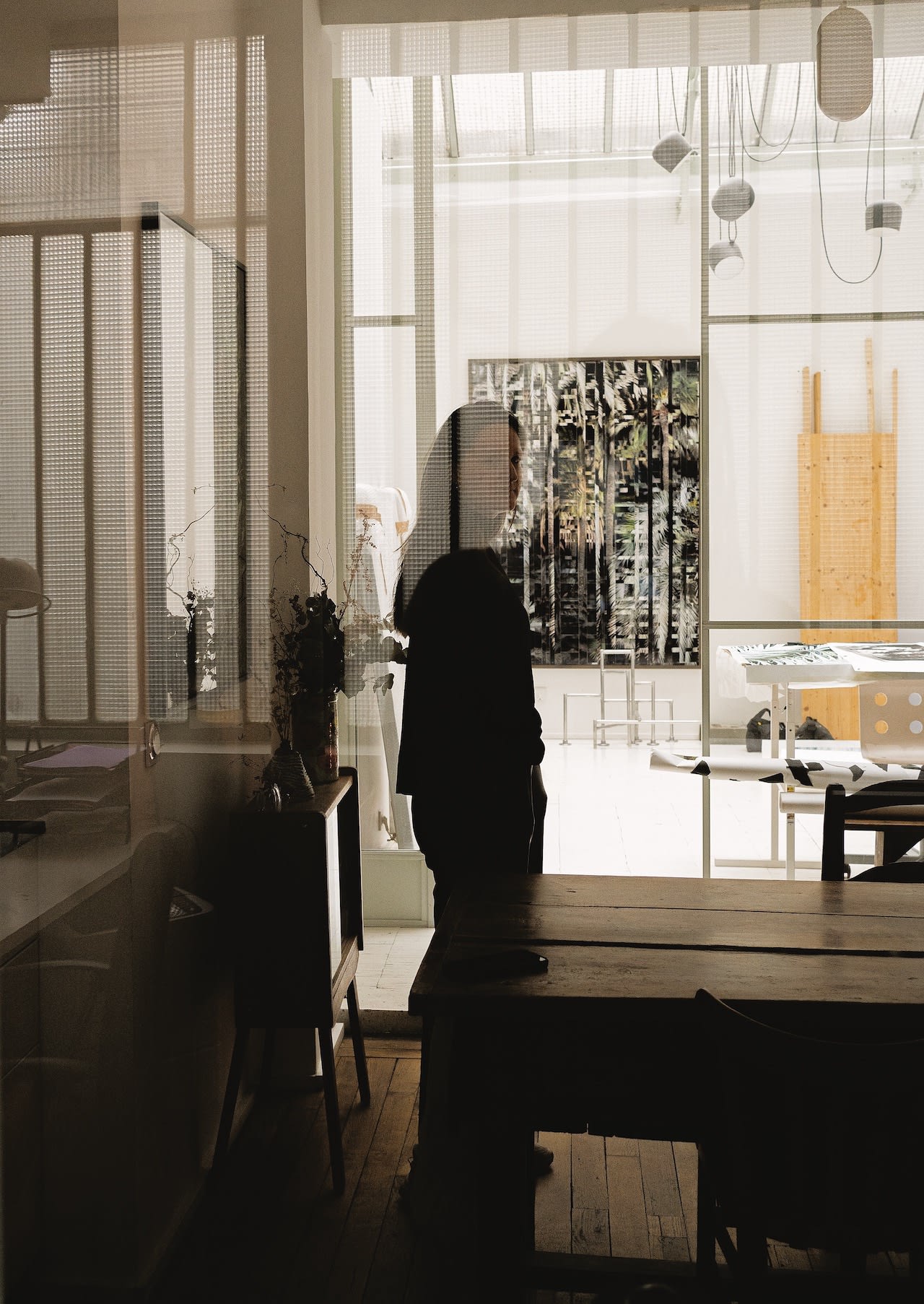Goudal’s work sits at a juncture between fiction and reality. Imagined scenes and scientific evidence attach and detach to coincide with the photographer’s intent and artistic gesture. The studio is at the centre of the unexplored landscapes, and it is here that images of tropical forests are reproduced, manipulated, deconstructed and multiplied. Goudal questions assumptions about the world, and highlights what we do not know about its dizzying movements and rhythm. The work offers an interpreted visualisation of these phenomena and little-known scientific events. The artist tells me about the scientific discoveries behind Post Atlantica: the coal found under the Antarctic ice, and the ice strata that hide tropical forests. The work functions as a translation of complex ideas into sensory experiences; perfectly incarnated by her video installation Inhale, Exhale (2021) or the triptych and film Untitled (Waves) (2022). The challenge is in conveying the unusual encounter between art and paleoclimatology.
Gazing at the artist’s work, we are placed in a position of confusion: what exactly are we looking at? It is a necessary destabilisation to provoke our ethnocentric vision of nature. By disrupting our perception, Goudal advances her reflection on the multiple links between humans and their environment. Can we consider Earth without any human presence and disturbance? Our planet existed before us, what will it be like without us? To see Goudal’s work is to experience the anticipation we all share: waiting for new discoveries about the past of the planet to explain what’s coming next. She educates us about Earth’s history and forces us to think about disasters to come. From her bright Belleville studio, Goudal’s work triggers viewers’ ecological agentivity.


